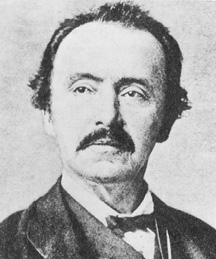Priam’s Treasure
Schliemann, Heinrich
Heinrich Schliemann (1822-1890) and Sir Arthur Evans famed as the discoverers of Troy and Knossos respectively are sometimes  claimed to have believed in the existence of Atlantis. John Michell quotes [0704.200] the following from Schliemann; “I have come to the conclusion that Atlantis was not only a great territory between America and the west coast of Africa, but the cradle of all our civilisation as well.” This extract is from a letter that was allegedly given to his grandson, Paul Schliemann. However, the letter in question was just part of a larger hoax perpetrated in 1912.
claimed to have believed in the existence of Atlantis. John Michell quotes [0704.200] the following from Schliemann; “I have come to the conclusion that Atlantis was not only a great territory between America and the west coast of Africa, but the cradle of all our civilisation as well.” This extract is from a letter that was allegedly given to his grandson, Paul Schliemann. However, the letter in question was just part of a larger hoax perpetrated in 1912.
Although Schliemann is credited with the discovery of Troy at Hissarlik in Turkey, he was not the first to suggest the site, in fact nearly a century earlier, ironically, in the year that Schliemann was born, Charles Maclaren (1782-1866), a Scot, also claimed that Hissarlik was the location of Troy in a work entitled, A Dissertation on the Topography of the Plain of Troy[541]. Others have cast doubt on the specific site identified by Schliemann.
L. Taylor Hansen noted that when Heinrich Schliemann declared that he was selling his business and going in search of Troy “archaeologists and others in the colleges burst into laughter.” However, when it was announced that he had found Troy, she tells us that “one of the scientists who had laughed the loudest and longest was so mortified that he committed suicide.” [572.22]
A somewhat harsh assessment of Schliemann’s site work noted that “he recklessly dug deeper and deeper—right through the ruins that were most likely the Troy he was looking for until he found a city that predated the Trojan war by at least 1,000 years. There’s even a big gap in the excavation map where King Priam’s palace was found. Schliemann removed it and threw it away. So we can all thank Schliemann for everything we do and don’t know about these ruins. He discovered the site, then demolished a lot of the important bits with his hamfisted approach.”(b)
The principal objection to Schliemann’s Troy was that the city he had located was too small to match the historical descriptions of Troy. The same might be said of many of the sites proposed as Plato’s Atlantis.
Schliemann also discovered many hundreds of swastikas throughout the Hissarlik site and is credited with bringing that symbol back to Germany, where it was later hijacked by the Nazis and came to represent evil oppression.(a)
Robert Temple notes in The Crystal Sun [928.39] that Schliemann excavated 49 convex crystal lenses that Temple has identified as optical artifacts. Despite earlier denials, these lenses along with the Trojan Gold, also known as Priam’s Treasure, discovered by Schliemann were plundered by the Russians after World War II and are still in their possession(c).
